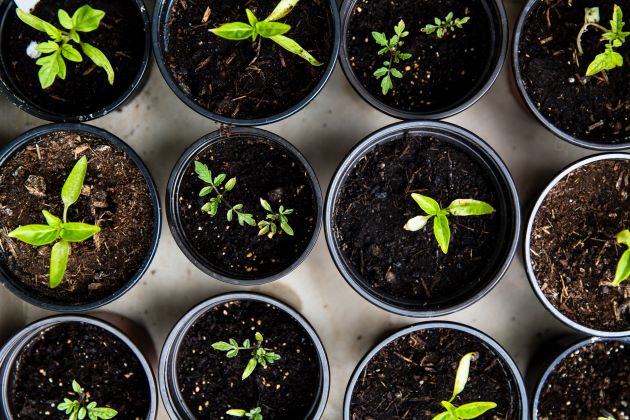With the Australian Bureau of Statistics revealing inflation is at a two-decade high and shoppers still reeling from skyrocketing lettuce prices – $12 a head, anyone? – many are looking for a viable alternative. Fortunately, savvy gardeners have uncovered an affordable solution that will keep those leafy veggies on your plate.
Perennial Asian greens are cheap, nutritious and, best of all, easy to grow. That’s right, you can even grow these veggies from your own home. These unassuming greens thrive especially well in the Australian climate. Forget pricey lettuce at the supermarket and get your gardening gloves on – experts say these veggies are easy for beginners to plant. Okinawa spinach is ready to harvest at just 35 days – and it really is the gift that keeps on giving.
We’ve researched a couple of the simplest – and healthiest – Perennial Asian greens to help you get started.
Betel leaf plant.

The Betel leaf plant, also known as Piper Sarmentosum, is a perennial creeping plant which produces a peppery flavour. It’s commonly used in Thai cuisine, often wrapped around a range of fillings, from peanut sauce and prawn to ginger.
It’s native to Thailand and Vietnam, and as such, thrives in a hot climate, making it the perfect option for Australians to grow at home. It can, however, survive in colder environments as it’s a hardy veggie. It requires some shade and while it tolerates moisture, it’s best to avoid water-logging the plant.
To propagate the Betel leaf plant, it’s best to use cuttings of around 20-30cm, along with leaves from the plant, then bury these in a pot or container with potting mix. Be sure to keep the soil moist.
Okinawa spinach.

This spinach, known by its Botanical name, Gynura Bicolor, is one of the quickest greens to harvest and is easy to manage. It offers plentiful health benefits and is even referred to as “cholesterol spinach”, with research proving its cholesterol-fighting ability and its effect on pre-diabetes. It’s also packed with vitamin A, iron and protein. Hot climates are ideal to grow this veggie in, it did originate in Asia and is native to India, Taiwan, Nepal and Japan. As such, Australia makes for the perfect location to plant these greens.
This is a low-maintenance veggie, only requiring the occasional pruning to ensure high quality leaves. It does well in sun and shade, but needs some moisture to reach its potential. Best of all, you can grow more spinach by planting seeds and cuttings from the plant. The most important part of this exercise is eating the spinach and you may be surprised to know the entirety of the vegetable is edible. This means you’ll also be cutting down on food wastage. Add your spinach to soups, sandwiches, shakes and salads for a heath boost – without draining your wallet.
Longevity Spinach.

Longevity spinach, also known as Gynura Procumbens, is another hardy, affordable option that packs a nutritious punch. It’s referred to as Longevity spinach for good reason, check out the range of health benefits it boasts:
1. Reduces blood glucose levels
2. Reduces blood pressure
3. Contains antioxidants
4. Reduces inflammation
You may be surprised to know longevity spinach is not actually spinach; it’s a vine. It still makes for a great option for new gardeners as it can easily be grown in a pot. When growing this plant, full sun or partial shade are the best options. But it’s important to note – this veggie will stop growing in cold weather. Take care to avoid water-logging as this will also prevent growth.
With rising environmental disasters, climate change and soaring inflation, many are becoming increasingly concerned with food resources, both when it comes supply and cost. Home-growing these hardy, inexpensive perennial greens are just one of many solutions consumers are turning to.
Grab a pot and some seeds and give it a go – these greens will thrive even on the smallest of balconies.






Leave a comment (all fields required)